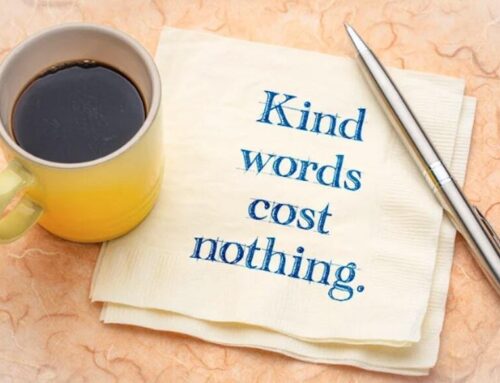
Role conflict is a significant issue in most workplaces. However, many people do not realize its existence despite its pervasive nature. The definition of role conflict in the workplace entails the occurrence of conflicts when employees are assigned different roles that are not compatible, yet they are expected to perform multiple roles simultaneously.
This blog explores the definition, types, and how to manage role conflict in the workplace.
When Does Role Conflict Happen?
Role conflict occurs when an employee’s responsibilities overlap with those of other workers or a workgroup, particularly when their job descriptions are not clearly differentiated within the same role. This lack of clarity is a major cause of work-related stress for employees, which is why it continues to receive significant attention from professionals and researchers.
The complexities of role conflict in the workplace stem from the desire of most organizations to facilitate fluidity in their work processes. The increasing demands from the digital economy and the modernity of most organizations contribute significantly to the prevalence of role conflict.
Why Is Role Conflict an Issue?
The major issue with role conflict stems from its effects. It is not merely a simple inconvenience in the workplace. Nor is it an occasional source of work-related stress. Role conflict has significant implications for employees, including their potential to affect job satisfaction, work productivity, and employees’ mental health.
In worst-case scenarios, workplace conflict can create an environment devoid of harmony. Employees who experience a recurrence of role conflict are also highly likely to experience emotional exhaustion and will consistently have a high turnover intention compared to other employees.
Workplace leaders and managers cannot continue to ignore the pervasiveness of role conflict in their workplaces. They must find ways to recognize and address role conflicts. AllWin Conflict Resolution Training is the place to turn to when seeking expertise and personalized conflict resolution training.
At AllWin, we teach how to recognize and address role conflict in your organization through tailor-made programs. Our programs focus on protecting your team’s mental health, securing your organization’s productivity, and ensuring that your organization can endure tough times to last for a long time to come.
Common Types of Role Conflict
Let’s begin by exploring the different scenarios commonly recognized as role conflict scenarios and how these contribute to negative aspects in your organization, including their effects on employee job satisfaction, productivity, and overall team dynamics.
In the workplace, role conflict is the state where the multiple roles of an employee have opposing expectations, incompatible demands, or pressures, resulting in feelings of stress and discomfort. Role conflict is mostly psychological, and it can arise within a single job or between different roles that an employee is expected to perform in his or her position in the work environment.
To understand more about role conflict in the work environment, let’s examine the different types of role conflict and how multiple roles give rise to this situation.
Inter-Role Conflict
The first type of role conflict commonly present in many workplaces is inter-role conflict. This type of conflict takes place when an employee notices that the expectations of one role conflict with the expectations of another role they are supposed to perform simultaneously.
Example
An example of inter-role conflict occurs when you are a working parent, constantly torn between your professional life and your life as a parent. You often struggle between choosing to meet a work deadline and attending your child’s school event. You are one person expected to fulfill the expectations of these two roles, which can be exasperating.
Individual Personality Characteristic Conflicts
Employees experience person-role conflict when their values, interests, and beliefs conflict with the expectations of their workplace roles. Imagine you are a team leader in a healthcare institution and also a strong supporter of work-life balance. Your role in the organization contrasts with your belief in work-life balance because you are sometimes required to work late hours.
Example
For instance, a healthcare team leader who values work-life balance may face person-role conflict when asked to work late hours. Balancing professional demands with personal values creates tension, especially if late hours interfere with family life.
Role Overload
Role overload is the third type of person-role conflict and occurs when the demands of a workplace role are too much for an individual employee to handle. This type of role conflict exists when there is too much pressure to meet stringent deadlines at work or the employee lacks the resources to meet the goals of their roles.
Example
A common scenario is when an employee is tasked with tight deadlines on multiple projects but lacks the support needed to complete them. This pressure can lead to stress and diminished productivity as the employee tries to meet unrealistic demands.
Intra-Role Conflict
Finally, employees in the work environment can experience intra-role conflict. This type of role conflict occurs when an employee is expected to meet the demands of two managers when it is impossible to fulfill such roles simultaneously.
Example
A good example of this type of conflict is when one manager demands an employee deliver a report, and another manager wants the same employee to make a presentation at a department meeting at the very same time. These conflicting demands give rise to this conflict.
Negative Effects and Challenges
Role conflict is the reason why many employees complain of tiredness, low motivation to go to work the next day, and their inability to be as productive as they would like. These employees also struggle to fit into work groups because of the internal conflicts arising from their conflicting roles.
Impact on Employee Well-being and Productivity
Inter-role conflict and intra-role conflict are a direct result of contrary demands imposed on a person in relation to their job. These conflicting demands are akin to pulling the same individual in different directions. In the workplace, roles are important, especially in a healthcare setting where quality care and positive patient outcomes are the greatest expectations.
An employee’s actions become affected when their roles are not clear and they are unsure what their responsibilities in the work environment entail. When an employee experiences such difficulties related to their roles at work, it is hard for them to experience job satisfaction. Job satisfaction is a state of happiness that comes with experiencing success while at work.
Team Dynamics and Organizational Productivity
Inter-role conflict and intra-role conflict cause interruptions, interferences, miscalculations, miscommunication, tension, and exhaustion within the work environment. It is hard for an employee to feel happy and satisfied under such circumstances.
There is also a critical link between role conflict and workplace productivity. In an organization, productivity occurs when there is an efficient use of labor and capital. Role conflict affects the efficient use of labor, especially when an employee becomes too stressed to work throughout the week or month. The high rate of absenteeism that arises because an employee needs some time off to recuperate after a stressful episode at work eventually affects their productivity.
Role conflict also occurs when employees experience decreased motivation due to increased stress. An employee whose roles conflict will find it hard to become efficient in their tasks, which means lower output from that employee. Some employees will also decide to quit their jobs when the stress becomes too much, resulting in significant losses for the company.
Finally, it is difficult to achieve team cohesiveness when some employees are suffering as a result of conflicts in their role expectations. Employees who are also unsure of their role expectations in a group project are less likely to work in harmony, which is one way in which role conflict affects team dynamics.
Widespread Impact of Role Conflicts
Undeniably, role conflict has the worst effects on an organization. They negatively affect individual employees and the organization as a whole. Individual employees experience multifaceted effects of role conflict, including but not limited to stress and burnout, reduced job satisfaction, low motivation, and a direct impact on the employees’ physical and mental well-being. These employees also find it challenging to work well with others, resulting in role conflict affecting interpersonal relationships at work.
Organizational Consequences
Organizations will also experience the negative consequences of role conflict in addition to the consequences affecting individual employees. Decreased productivity in the workplace means limited profitability for an organization. The organization will not achieve a perfect balance in its inputs and outputs because its employees are stressed due to role conflict, and they will struggle to perform their tasks.
The organization will also suffer a high employee turnover. Every organization understands the effects of losing prized employees, especially if they leave to work for their competitors. Role conflict can cost the organization thousands of dollars even as they work through the tedious process of selecting, recruiting, and finally training new employees until they are as good as the rest of its employees.
Reputation Damage
If an organization does not address role conflict, there is usually the long-term consequence of low employee morale. These are employees struggling with their roles, and if they do not get any help, they will always feel the tension and the stress in the work environment.
Some of these employees will also tell others about their stressful workplace, damaging the reputation that the organization has taken years to build. The effect on a company’s reputation clearly shows how role conflict is pervasive. With a damaged reputation, an organization will find it harder to attract top talent. The organization might also experience damaged trust among its customers as a result of the damaged reputation.
By understanding the effects of not addressing the negative consequences of unaddressed role conflict, you will recognize the importance of finding the right solution to the specific type of role conflict present in your organization.
Fortunately, AllWin Conflict Resolution Training focuses solely on conflict resolution programs suitable to the needs of diverse workplaces. Your organization will achieve its much-needed workplace peace, especially because our trainers are also practitioners, and your team will learn from workplace conflict experts working in different fields.
Effective Strategies for Managing Role Conflict
Role conflicts are not an intentional occurrence in the workplace. They usually result from unforeseen circumstances, especially when the role conflict involves an individual employee and their beliefs, personal values, and interests. Still, organizations must find ways to help employees navigate the negative consequences that arise because of role conflicts.
While role conflicts are undesirable and even disruptive, they also present opportunities for growth within an organization. If you are a manager who discovers the existence of role conflicts, you can use that opportunity to provide clarity about the different roles of your subordinates.
Addressing role conflict is critical if your organization intends to maintain job satisfaction, productivity, and positive team dynamics. Here are some strategies that will help you identify and manage role conflict.
Clarify Roles and Expectations of Each Role
The root cause of role conflict in the workplace is often when employees experience role ambiguity. Role ambiguity can be fully eliminated by ensuring that every job description is clearly defined and employees are sure about their duties and responsibilities from the moment they walk in through the office doors.
Your managers and supervisors should revisit the meanings of work and job descriptions as regularly as possible. It would mean more work for managers and supervisors, but it would be worth the trouble.
Provide Enough Resources
Some role conflicts arise from limited resources. For example, an employee might have a role with expectations that are quite high. Such employees can meet these high expectations with enough resources, such as providing them with high-speed internet and a computer or assigning them a helper who can type their reports as they work on them. In a nutshell, providing enough resources can eliminate role overload in the blink of an eye.

Promote Work-Life Balance
It’s important to always remember that your employees are human and they have a life outside the workplace. Some of them are parents who need to maintain a career and still make it to all the events in their children’s schools and attend to their family responsibilities. The best strategy to ensure that these employees do not suffer from their inability to divide their attention is to promote work-life balance.
You can offer your employees options, such as working remotely on certain days of the week, a flexible work culture, and asking them to take part in workplace wellness programs. At the end of these programs, your employees will be happy and satisfied with their professional and personal lives enough to remain productive throughout the year.
Some benefits that employees and the entire organization will enjoy from an effective resolution of role conflicts include:
- Improved Communication: The effective resolution of role conflicts marks the beginning of open and honest conversations among team members. Previously, we noted how role conflicts affect team dynamics and how their prompt resolution restores teams to their original working condition.
- Improved Problem-Solving: If there are unresolved role conflicts in your organization, problem-solving efforts are almost nonexistent. Essentially, conflicts arise when employees have different perceptions of a similar issue. Some strategies your organization will adopt during its role in conflict resolution will impart knowledge on how to solve problems without letting them affect productivity.
- Better Relationships Among Employees: One major benefit of resolving role conflicts in the workplace revolves around restoring employee relationships. Essentially, you are choosing to repair relationships among employees who suffer as a result of their differences in understanding their roles and responsibilities in the workplace.
- Reduced Stress: Role conflicts are known to affect an employee’s mental well-being. It is stressful to wake up every morning to perform unclear roles, and even worse when these conflicts clash with our desire for work-life balance. By resolving these conflicts, you will be eliminating the root cause of employee stress.
Contact Us for Personalized Conflict Resolution Training
In today’s dynamic workplace environment, role conflicts are an inevitable challenge, touching on nearly every aspect of organizational life and significantly impacting both the organization and individual employees. Understanding the nuances of role conflict, including its types, root causes, and real-world implications, is crucial for effective management and resolution. Left unaddressed, these conflicts can lead to decreased job satisfaction and productivity, undermining the core of your workforce’s morale and efficiency.
However, there’s a comprehensive approach to not only managing but effectively resolving these conflicts. AllWin Conflict Resolution Training offers personalized conflict resolution training tailored to your organization’s unique needs. Our experts are dedicated to equipping you with the necessary tools and strategies for managing role conflict, ensuring your efforts to clarify roles, provide adequate resources, and support work-life balance are amplified through effective conflict resolution techniques.
Don’t let role conflicts derail your team’s productivity and satisfaction. Contact us today to explore personalized training options designed to transform the way your organization addresses conflict. Let us help you navigate the complexities of role conflicts with tailored solutions that promote a harmonious, productive workplace.

About the Author: Jeremy Pollack
Jeremy Pollack, Ph.D. is the founder of Defuse De-Escalation Training, a sister company of Pollack Peacebuilding Systems, the largest workplace conflict resolution training and consulting firm in North America. He actively participates in de-escalation training and consulting initiatives for a variety of industries, from Fortune 500 companies to well-known non-profits. Besides his Ph.D. in Psychology from Grand Canyon University, Jeremy holds a Master’s Degree in Negotiation, Conflict Resolution, and Peacebuilding (NCRP) from California State University, Dominguez Hills. He is also a member of several organizations focused on conflict resolution and peacebuilding, such as the Peaceful Leadership Institute, the Association for Conflict Resolution, and the Division 48 (Division of Peace Psychology) of the American Psychological Association. Jeremy also holds several certifications in the field of training and coaching: he is a Certified Organizational Development Coach (CODC™), a Certified Clinical Trauma Specialist-Individual (CCTS-I™), and an Associate Certified Coach (ACC) under the International Coaching Federation.



